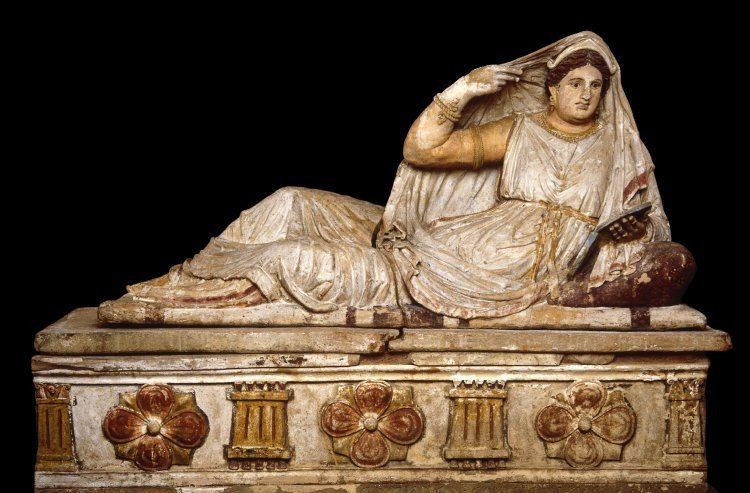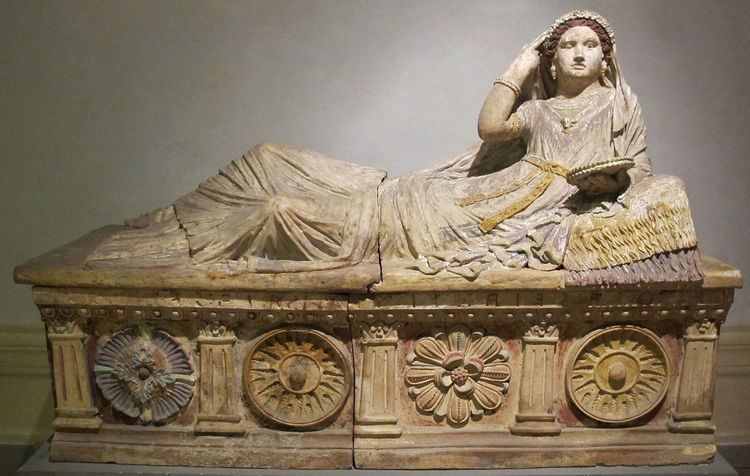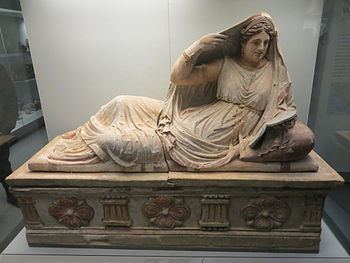Size Length 1.83 m Material Terracotta | Created 150–140 BC | |
 | ||
Registration GR 1887.4-2.1 (Terracotta D 786) Similar Sarcophagus of the Spouses, The Orator, Chimera of Arezzo, Sarcophage des Amazones, Idolino | ||
Sarcophagus of seianti hanunia tlesnasa etruscan 150 130 bc poggio cantarello british museum london
The Sarcophagus of Seianti Hanunia Tlesnasa is the life-size sarcophagus of an Etruscan noblewoman dating from between 150–140 BC. Since 1887, it has been part of the British Museum's collection.
Contents
- Sarcophagus of seianti hanunia tlesnasa etruscan 150 130 bc poggio cantarello british museum london
- Discovery
- Description
- Scientific Analysis
- References

Discovery

The brightly painted sarcophagus of the Etruscan aristocratic woman Seianti was discovered in 1886 at Poggio Cantarello near Chiusi in Tuscany and was subsequently sold, along with its contents (a skeleton and some grave belongings), to the British Museum. A similar sarcophagus is in the collections of the National Archaeological Museum in Florence. Known as the Sarchophagus of Larthia Seianti, the two women were probably from the same dynastic family in ancient Chiusi.
Description

The sarcophagus is a masterpiece of Etruscan artwork. The deceased woman's name is inscribed in Etruscan along the base of the chest. She must have belonged to one of the richest families of Chiusi, as Seianti is dressed sumptuously for the occasion, wearing an ornate gown and cloak, with complicated drapery falling sinuously over her body, and adorned with a tiara, earrings, bracelets and a necklace. Seianti has been depicted as a mature lady, who gestures to adjust her veil, realistically revealing parts of her body in the process. She leans against a pillow and holds a mirror in her other hand, gazing into the distance.
Scientific Analysis

Scientific analysis of the bones and teeth that were deposited in the chest indicated that Seianti probably died at about 50–55 years of age. The rather idealised face of the deceased woman depicted on the sarcophagus, which was typical of Etruscan art at the time, can be compared with an accurate and less flattering reconstruction of her face in the museum, based on the features of the deceased woman's skull.


